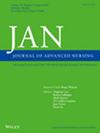中国养老院分布现状:全国横断面研究
IF 3.8
3区 医学
Q1 NURSING
引用次数: 0
摘要
目的人口老龄化是全世界尤其是中国面临的挑战。方法数据来源于民政政务综合服务平台《2020 年中国县域统计年鉴》和《2020 年中国城市统计年鉴》。利用全球莫兰指数检验养老院的聚类情况,利用组间和组内泰尔指数区分差异来源。进行耦合协调分析以探讨协调性。利用地理加权回归研究经济发展和老龄化对养老院资源的影响。所有分析均采用 Arcgis 10.8 和 R Studio 4.3.2 进行。全国县级养老机构和床位的 Theil 指数分别为 0.32450 和 0.30675。然而,在对各省区进行比较后发现,全国各地的差异主要来自省内(贡献率:机构 65.0%;床位 73.0%)和区内(贡献率:机构 99.0%;床位 91.0%)。大部分区县的机构数与床位数耦合协调指数均为 0.5。 结论我国养老院资源发展迅速,总体呈现均衡状态,但仍需进一步优化。本研究为有针对性地分配基本公共服务奠定了基础,重点关注适合老年人需求的养老院医疗资源。研究意义本研究强调了有针对性的养老政策的迫切需要,强调优化资源分配以提高老龄人口的整体护理质量。本文章由计算机程序翻译,如有差异,请以英文原文为准。
Current Status of Nursing Home Distribution in China: A National Cross‐Sectional Study
AimsPopulation aging is a challenge that the whole world is facing, especially in China. This study aims to investigate the current distribution status of nursing homes in China using spatial epidemiology methods.DesignCross‐sectional study in China.MethodsThe data were obtained from the Integrated Civil Affairs Government Service Platform ‘China County Statistical Yearbook’ for 2020 and the ‘China City Statistical Yearbook’ for 2020. Using global Moran's index to test the clustering of nursing homes, inter‐group and intra‐group Theil index was utilised to differentiate the sources of differences. The coupling coordination analysis was conducted to explore the coordination. Geographically weighted regression was utilised to investigate the impact of economic development and aging on nursing home resources. All analyses were conducted by Arcgis 10.8 and R Studio 4.3.2.ResultsGlobal Moran's index indicated that the distribution of nursing homes in China exhibited clustering. The Theil index values for institutions and beds at the national county were 0.32450 and 0.30675. However, upon comparing provinces and regions, it was found that the differences across the country mainly stem from within provinces (contribution rate: institutions 65.0%; beds 73.0%) and within regions (contribution rate: institutions 99.0%; beds 91.0%). The majority of districts and counties had a coupling coordination index of institutions and bed numbers, both of which were < 0.5.ConclusionThe development of nursing home resources in China has been rapid, generally presenting a balanced state, but further optimisation is needed. This study established a foundation for the targeted distribution of essential public services, focusing on nursing home healthcare resources tailored to the needs of older persons.ImplicationsThe study underscored the urgent need for targeted elderly care policies, emphasising the optimisation of resource distribution to enhance the overall quality of care provided to the aging population.No Patients or Public ContributionThe study did not involve humans.
求助全文
通过发布文献求助,成功后即可免费获取论文全文。
去求助
来源期刊
CiteScore
6.40
自引率
7.90%
发文量
369
审稿时长
3 months
期刊介绍:
The Journal of Advanced Nursing (JAN) contributes to the advancement of evidence-based nursing, midwifery and healthcare by disseminating high quality research and scholarship of contemporary relevance and with potential to advance knowledge for practice, education, management or policy.
All JAN papers are required to have a sound scientific, evidential, theoretical or philosophical base and to be critical, questioning and scholarly in approach. As an international journal, JAN promotes diversity of research and scholarship in terms of culture, paradigm and healthcare context. For JAN’s worldwide readership, authors are expected to make clear the wider international relevance of their work and to demonstrate sensitivity to cultural considerations and differences.

 求助内容:
求助内容: 应助结果提醒方式:
应助结果提醒方式:


